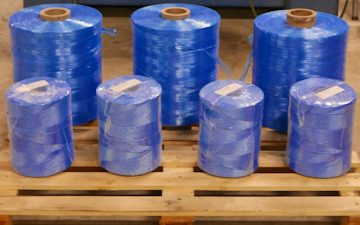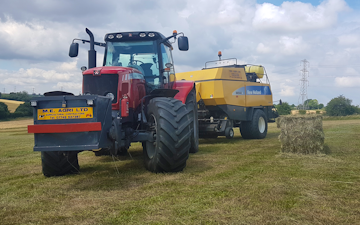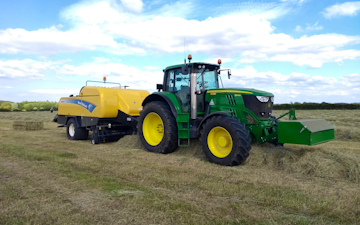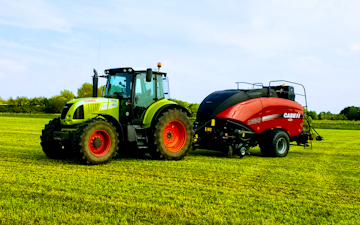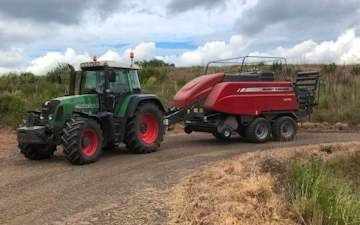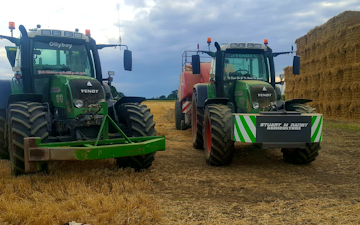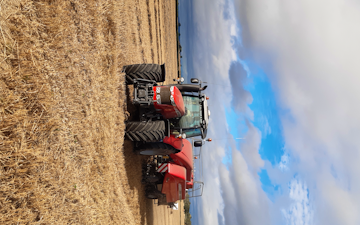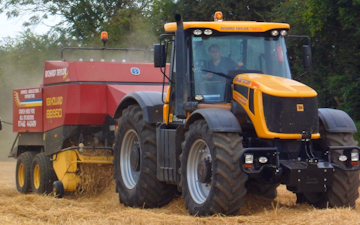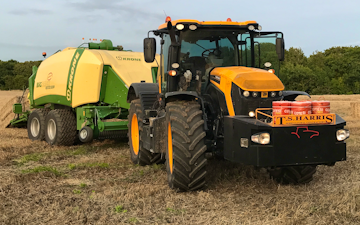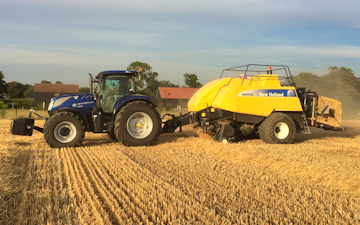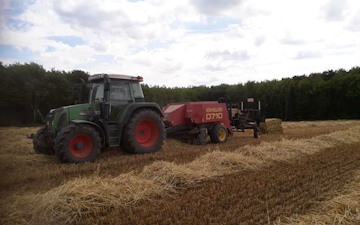Large square baling
See who offer large square baling near you.
Large square baling
The combine harvester leaves a straw string after it has separated the grain from the axis. In UK, you usually bale wheat straw or barley straw, as these are the most common crops on the UK fields. Grass seed straw and rape straw also make a nice part of the straw baling every year. In unfortunate cases, it may rain just after the swath has been laid out. If this happens, the farmer or agricultural contractor may need to spread the swath with a tedder so that the swath can quickly dry again. When the swath is dry, it can be raked back together with a hay rake. If it is estimated that the humidity in the straw is satisfying, the baling of the large square bales can begin. The humidity in the straw is often measured using a hay moisture meter, which is typically a moisture meter spear that you stick into the large square bale.
The path of the straw through the baler is a relatively simple process. The straw is collected using a pickup. Then it gets more and more normal that the straw is cut using, for example, a crop cutter. Then the bales are compressed by a large piston. During the piston pressing, the twine is being wrapped around the bale so that it does not fall apart afterwards. Most large square balers are also mounted with a weight, so the tractor operator constantly controls the weight of the bales.
When the tractor operator drives around the field, he always tries to put the bales together or close to the nearest road. In this way, driving on the field is reduced by bale carting so that the structural damage is minimized. Often the large square baler is mounted with a wagon on its back so that the tractor operator can put off more bales at the same time. This wagon can come in several variants, such as: bale collector, stacking wagon or other trailers. Once the bales are laid on the ground, they must get on the trailers as fast as possible. Often you have a long bale wagon, that can carry a lot of bales. The large square bales are lifted onto the trailer using either a backhoe loader, front loader or telescopic loader. When the bales are stacked on the wagon, it is important that they are clamped so that they do not drop off. Often the bales are clamped with hay straps. Then the hay is either transported to a hay barn, a haystack or directly to a heating plant. The haystack typically gets wrapped around with plastic so that the hay does not get wet. Haystack are mostly used if the farmer or the contractors have no more space in the hay barn.
